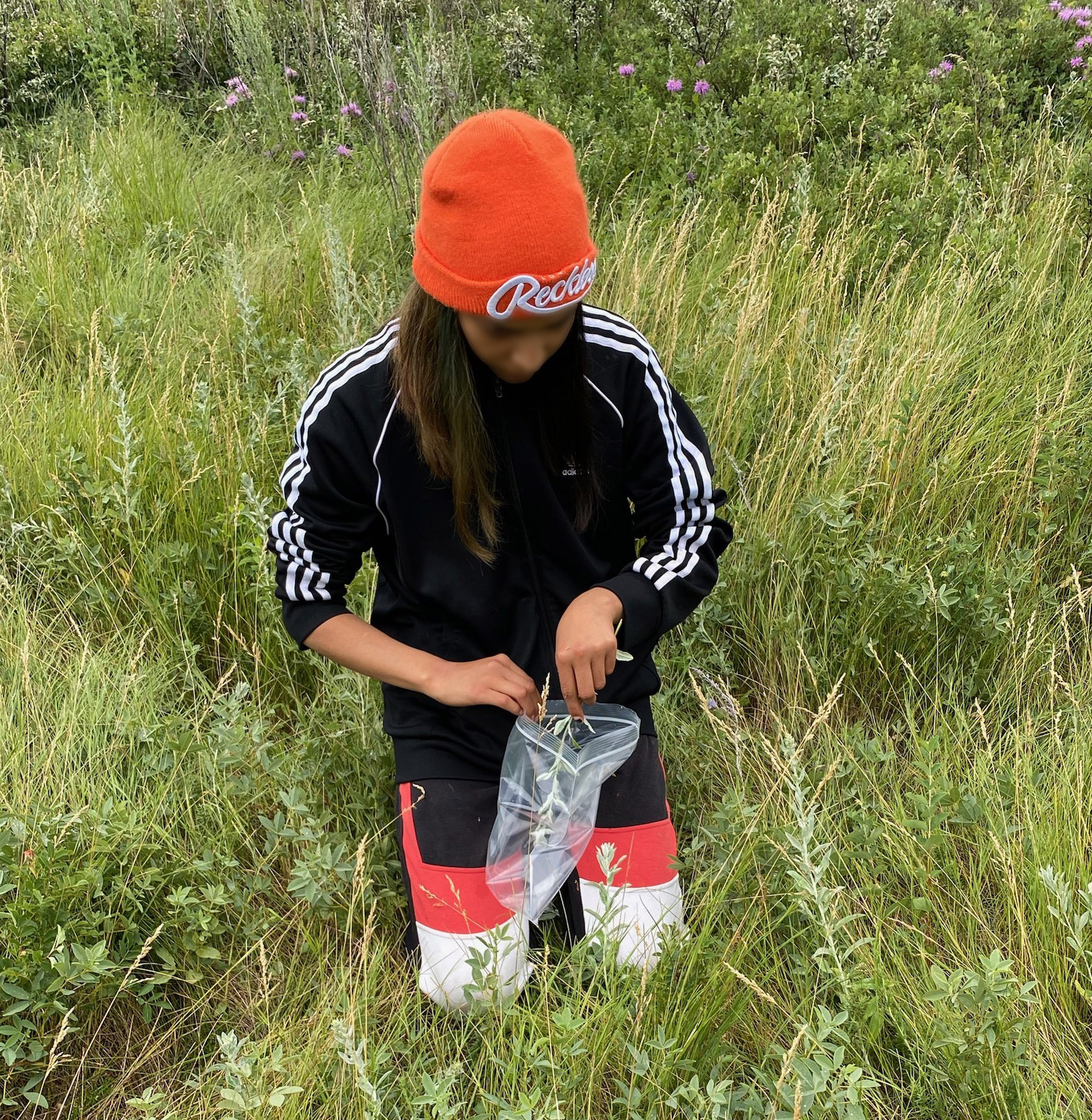Learning about and using traditional medicines has been a crucial part of my journey to connecting with my Indigenous identity and Plains Cree culture. I grew up in an urban space, which resulted in a disconnect from traditional knowledge and practices.
In recent years, I have been exploring and accepting what being Indigenous means to me. Finding aspects of my culture has created this sense of belonging and has filled in pieces of my identity that I have always known were missing.

When creating planning days for the summer, I thought about ways I could provide the youth with the same teachings that have been passed down to me and ways that I could promote wellbeing within the unit. A starting part for this was to take them out onto the land.
One of my favourite areas to explore and be outside is Fairy Hill near Southey, which is also an area where wild plants and medicine grows. We decided to utilize this day to be outside and to learn about and harvest the medicine sage.
During group I opened a discussion with the youth about smudging and medicine. Our youth are knowledgeable and carried with them a lot of the teachings already. Once the youth were done teaching me about what they knew, I shared with them some of my knowledge. I told them that in recent years, I’ve been taught to look at wellbeing through the medicine wheel - to be well means to tend to your mental, spiritual, physical, and emotional health and to live in a balance between them. Creator has provided us people with four sacred traditional medicines: sweet grass, cedar, sage, and tobacco.
Sage is used for many things, one being to smudge. We smudge with sage to cleanse our spirits and to remove bad energy. We use it to take care of our spiritual wellbeing. When picking sage, there are protocols we follow to honour its sacredness. We don’t pick the first plant we see, out of respect. We talk to the plants, introduce ourselves, and ask them if it’s okay if we harvest them. The plants have a spirit and we must respect that they’re giving up their spirit for our well being. We place tobacco down at the first plant we harvest and say a prayer to give thanks. We only take as much sage as we need, and we never harvest more than half of the plants we see.
The youth were very receptive to this information. Once we got to Fairy Hill, we followed the trail down for a bit until we found a field of sage. The youth asked a lot of questions while we harvested to ensure they were being respectful. All youth harvested sage to use for their own smudging and enjoyed being out on the land. Once we got back to the unit, we tied our sage into bundles and placed it into spots where it could dry for a few weeks.
It’s now been a couple of weeks since we harvested, and every time I walk into the unit the youth ask me in excitement when the sage is ready to be used. It’s not completely dried yet, but once it is, we plan to incorporate smudging into our everyday routines.


